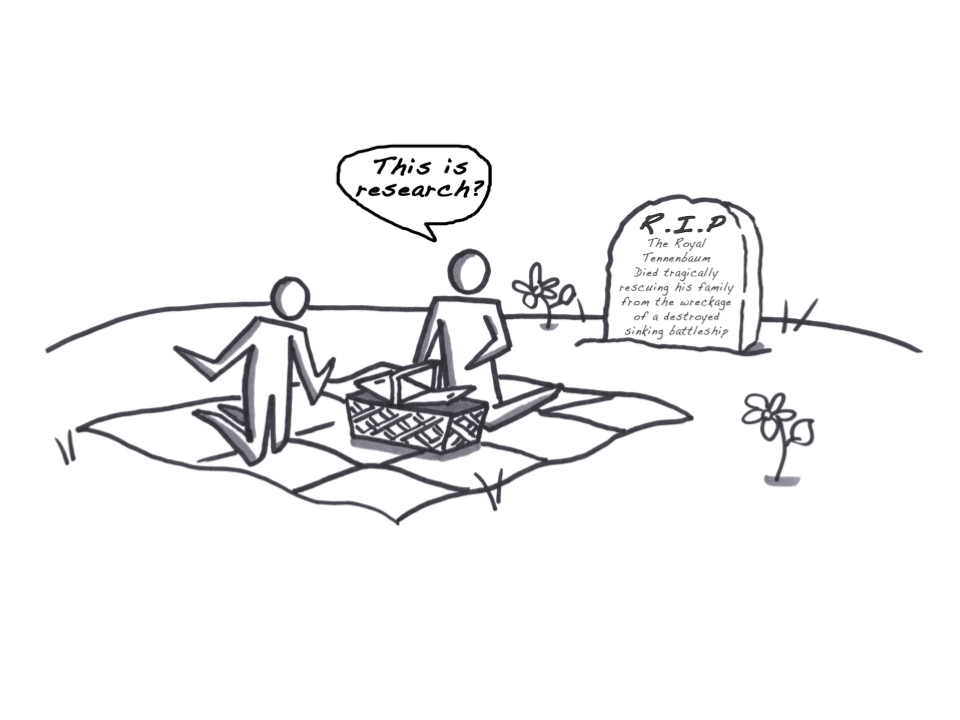Picnic in the Graveyard

Picnic in the Graveyard
In Brief
This technique involves exploring "near miss" failures similar to our product idea to generate ideas about what to test and how to build a business model that could work in a second attempt.
Helps Answer
- What related products have been created in the past?
- What did customers like/not like about previously created products?
- What advice would founders of failed products similar to our idea (near misses) give us, if they were to go after the idea again?
- Which features have to be included in the product?
- How is this product different from similar products offered in the past?
Tags
- Generative
- Product
- Feature
- Positioning
- Advice
Description
Sean Murphy described it best: "Do research on what’s been tried and failed. Many near misses have two out of three values in a feature set combination correct (some just have too many features and it’s less a matter of changing features than deleting a few). If you are going to introduce something that’s “been tried before,” be clear in your own mind what’s different about it and why it will make a difference to your customer."
The goal of this technique is to identify a unique way to angle a product, so that you avoid a previously committed error. You will be introducing the idea at a later time, which will be to your benefit, but it's likely that previous failures will provide you with useful feedback.
With this technique, you are aiming to construct a fuller picture of what's been tried in the past to identify potential landmines. This helps navigate a similar space, but with the benefit of the previous founders' experience. It may help generate ideas on the product side, such as in terms of feature set. It may also help generate ideas about targeting to a different market segment, or any of the ten other pivots in Eric Reis' The Lean Startup.
Time Commitment and Resources
- Desk research: 1-2 days.
- Customer development: Similar to customer discovery interviews.
- Founder interviews: It depends on how difficult it is to find contact details for former founders. It is probably a good idea to timebox contact detail searches. Actual timebox size will depend on how useful/helpful you think advice would be from that founder. For example, choose a timebox of one day per founder if there were a few startups similar to yours. After that, it's similar to customer discovery interviews.
How to
- Perform some desk research (such as Google) to identify previous attempts at entering a similar market with a similar product to your product/product idea. Depending on the idea type, you may also find it useful to ask your local librarian if they can help you find relevant case studies.
- Use social media platforms to seek out customers of these previous companies. Look for "Likes" of the product/company name on Facebook, or old tweets mentioning the company.
- Reach out and contact these previous customers and interview them. Do both problem and solution interviews. Find out what they liked and disliked about the previous company.
- Then try to find the founders or project/product leads if at a big company and interview them about their experiences.
Interpreting Results
This is a wonderful technique to generate a lot of ideas in an area you are already operating in. Particularly at the beginning of a startup journey, this technique can help zoom in on what to avoid and exactly what to test, to verify for yourself if a particular assumption is still true/false.
Potential Biases
- Overconfidence: Could prevent you from using the technique.
- Dismissing it too quickly: On the other side, exploring the reasons why others failed can make you doubt an idea too much if you can't find a unique angle to test the idea.
Field Tips
- Picnic in the Graveyad: If you try to hold a night-time picnic in a cemetery that doesn't allow it you might get arrested. - @RebelCircus
- Our idea is not unique. Use the Picnic in the Graveyard technique. - @TriKro
- Get help from other founders when you can. Use the Picnic in the Graveyard technique. - @TriKro
- Got a tip? Add a tweetable quote by emailing us: [email protected]
Case Studies
- Medium: My Startup Failed: Lessons learned from a first-time founder in the startup trenches
- Autopsy Lessons from Failed Startups
- CBinsights: 323 Startup Failure Post-Mortems
- Got a case study? Add a link by emailing us: [email protected]
Tools
- Got a tool to recommend? Add a link by emailing us: [email protected]
